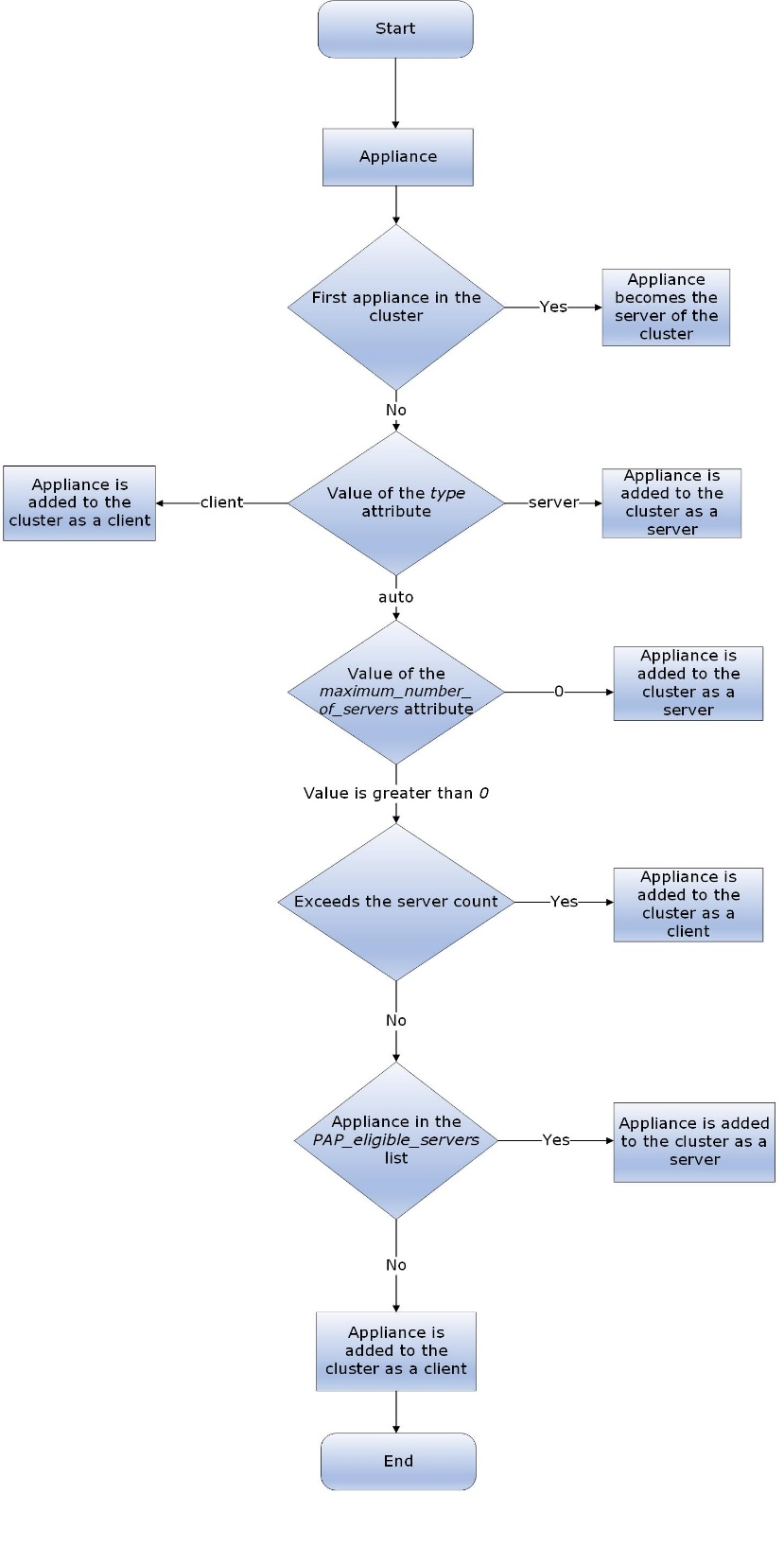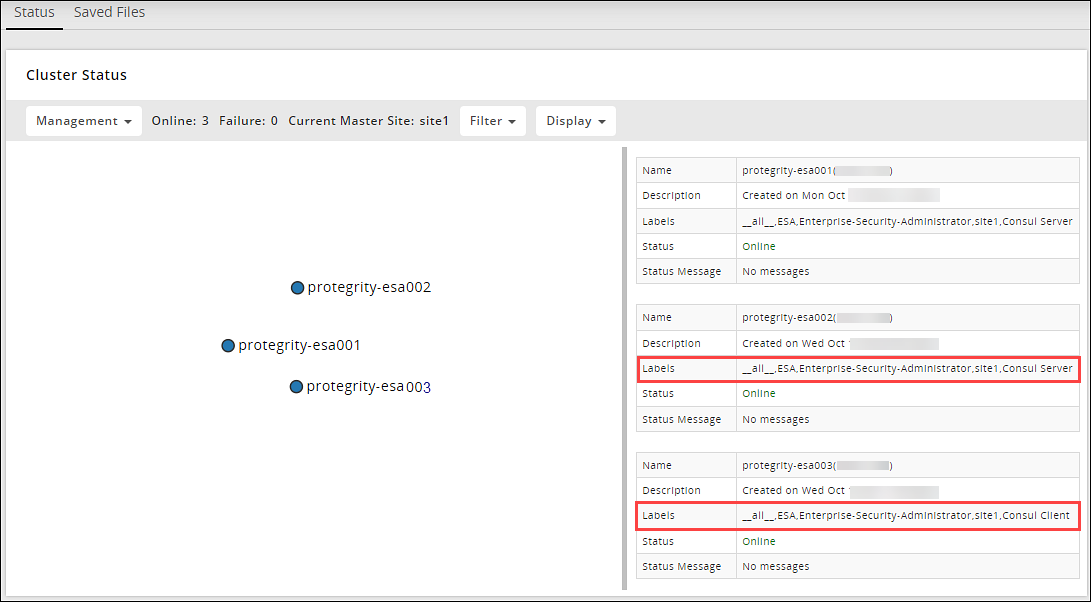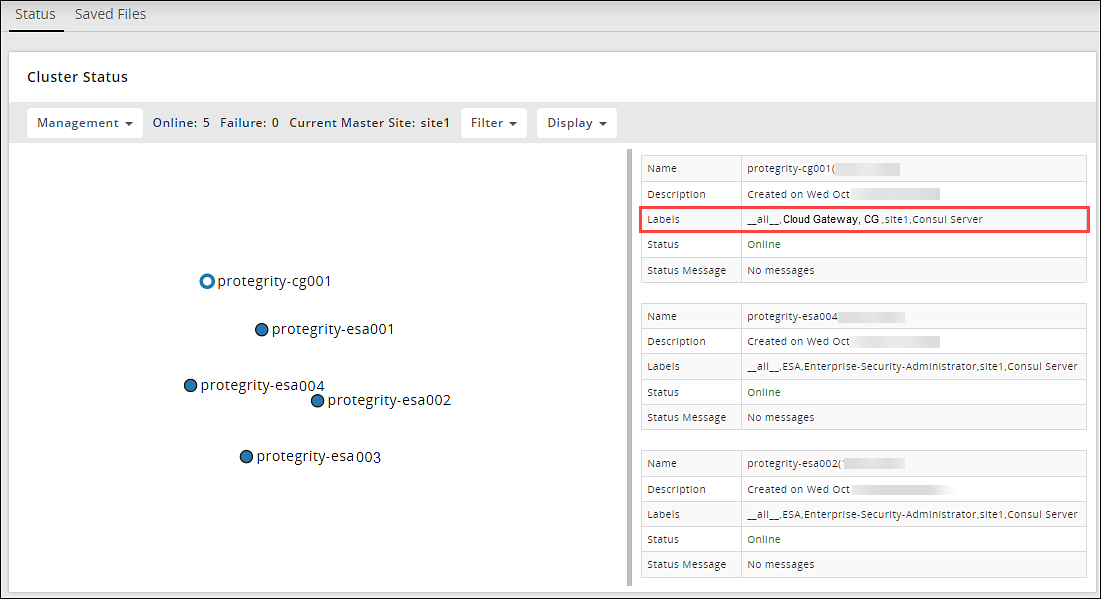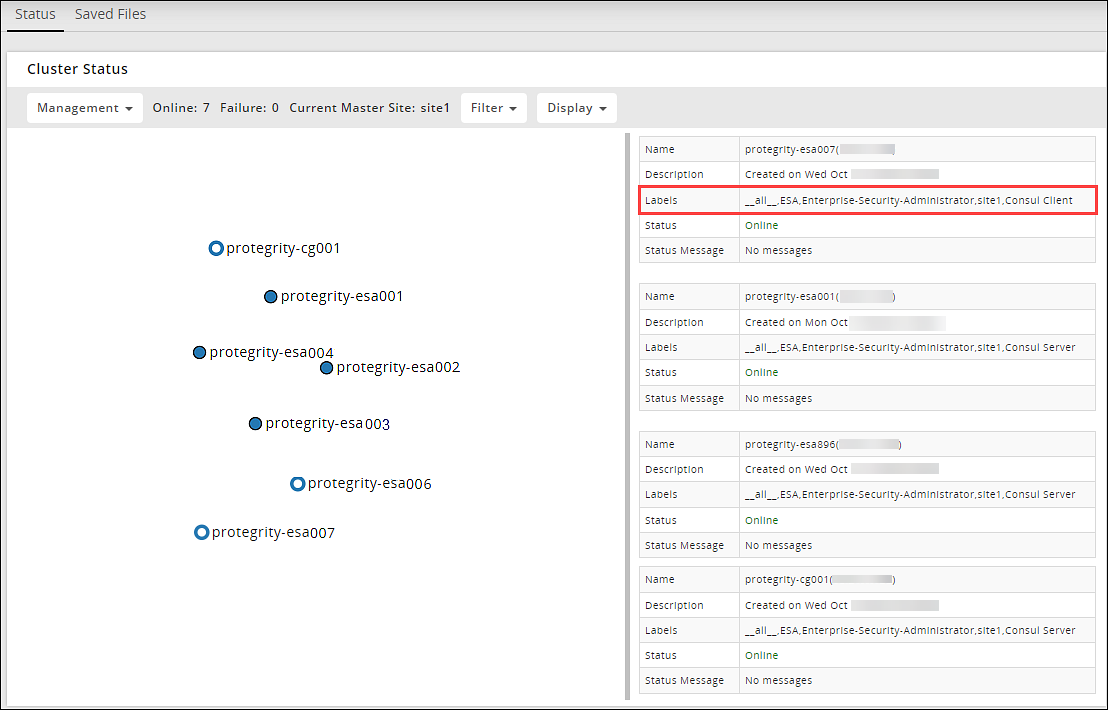Deploying Appliances in a Cluster
You can deploy the appliances in a cluster as a server or a client. The type attribute in the agent.json file and the PAP_eligible_servers and maximum_servers attributes in the agent_auto.json file determine how the appliance is deployed in the cluster.
The following flowchart illustrates how an appliance is deployed in a cluster.

Example process for deploying appliances in a cluster
Consider an ESA appliance, ESA001, on which you create a cluster. As this is the first appliance on the cluster, ESA001 is becomes the leader of the cluster. The following are the values of the default attributes of the agent.json and agent_auto.json files on ESA001.
- type: auto
- maximum_servers: 5
- PAP_eligible_servers: ESA

Now, you want to add another ESA appliance, ESA002, to this cluster as a server. In this case, you must ensure that the type attribute in the agent.json file of ESA002 is set as server.
If you want to add an ESA003 to the cluster as a client, you must ensure that the type attribute in the agent.json file of ESA003 is set as client.
The following figure illustrates the cluster comprising of nodes ESA001, ESA002, and ESA003.

Now, you add another ESA appliance, ESA004, to this cluster with the following attributes:
- type: auto
- maximum_servers: 5
- PAP_eligible_servers: ESA
In this case, the following checks are performed:
- Is the value of maximum_servers greater than zero? Yes.
- Is the number of servers in the cluster exceeding the maximum_servers? No
- Is the appliance code of ESA004 in the PAP_eligible_servers list? Yes.
The name or appliance code of appliances can be viewed in the Appliance_code file in the /etc directory.
As long as the limit of the number of servers on the cluster is not exceeded and the appliance is a part of the server list, ESA004 is added as a server as shown in the following figure.

Now add a DSG appliance named CG001 to this cluster with the following attributes:
- type: auto
- maximum_servers: 5
- PAP_eligible_servers: CG
In this case, the following checks are performed:
- Is the maximum_servers greater than zero? Yes.
- Is the number of servers in the cluster exceeding the maximum_servers? No.
- Is the appliance code of CG001 in the PAP_eligible_servers list? Yes.
Thus, DSG1 is added to the cluster as a server.

Now, consider a cluster with five servers, ESA001, ESA002, ESA003, ESA004, and ESA006 as shown in the following figure.

You now add another ESA appliance, ESA007 to this cluster, with the following attributes:
- type: auto
- maximum_servers: 5
- PAP_eligible_servers: ESA
In this case, the following checks are performed:
- Is the maximum_servers greater than zero? Yes.
- Is the number of servers in the cluster exceeding the maximum_servers? Yes
- Is the appliance code of ESA007 in the PAP_eligible_servers list? Yes
Thus, as the limit of the number of servers in a cluster is exceeded, ESA007 is added as a client.
